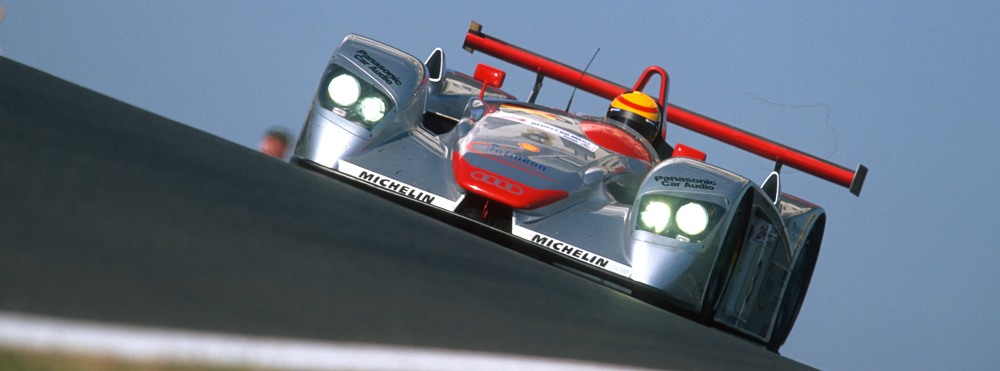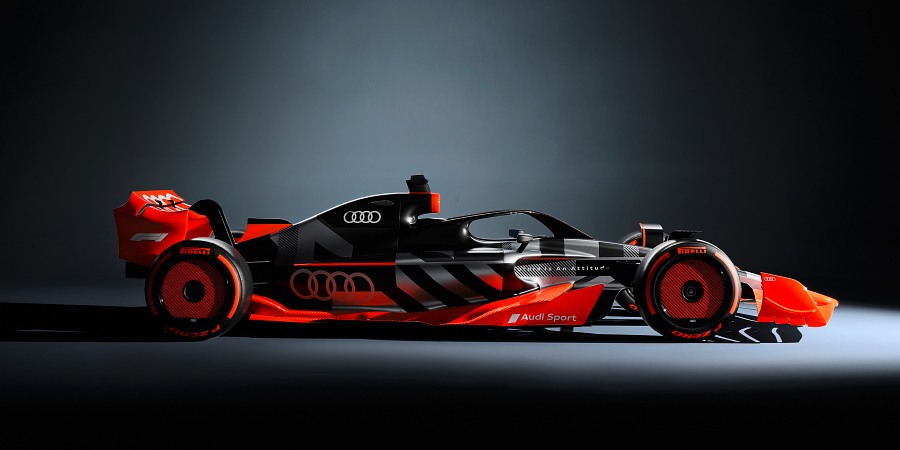It doesn’t happen often. On the contrary. Looking back, it’s hard to remember when was the last time a car corporation of this magnitude decided and implemented a decision to join the world’s most prestigious car race – Formula 1. And of course, we’re talking about Audi.
The German car manufacturer, which produces, markets, and distributes luxury vehicles, is a subsidiary of the Volkswagen Group, one of the largest car companies in the world. Audi’s headquarters is located in Ingolstadt, Bavaria, Germany. The company, which employs more than 90,000 people worldwide, has adopted the slogan “Progress through Technology” and emphasizes innovation, sustainability, and of course, quality.
In August 2022, Audi announced its entry into the circuit as an engine manufacturer, and shortly after, in October, it announced a partnership with one of the Formula 1 teams – Sauber Motorsport. Audi’s journey to Formula 1 didn’t start in one day. The company had been considering the possibility of entering the field for years and carefully weighed the required investment and business potential. The final decision was made following changes introduced to Formula 1 regulations that will come into effect from 2026. These changes essentially encourage the entry of new players into motorsports and make it more attractive economically and strategically. The regulatory change provides an opportunity for new players to enter, as it creates new rules for everyone, and while the advantage of veteran teams doesn’t disappear, it certainly diminishes.
Diet for Cars
Audi’s decision to join Formula 1 comes at an interesting and challenging time in the world of sports. With increasing emphasis on sustainability and green technologies, Formula 1 is undergoing significant changes. In the new cars, which will be designed and assembled according to the very precise guidelines published by FIA, the governing body of Formula 1, several changes will be implemented.

Among the changes is a reduction in the car’s weight by about 30 kg. It was also decided to add a new power unit and an equal distribution between internal combustion engine and electric power. Another change will be made to the rear and front wings, allowing them to be moved during the race. This change provides advantages in certain parts of the track, improves safety, and enhances driver protection capabilities.
These are substantial changes, and teams will need to invest their best minds and technologies to succeed in realizing the maximum potential of the cars within the framework of the new regulations. The final results will only become clear on the track at the beginning of 2026.
The Engine Challenge
One of the major challenges facing Audi is developing a power unit (engine) that will meet the high standard of Formula 1. The battle will be against experienced and established engine manufacturers like Ferrari, Mercedes, and Honda, which have been supplying and producing engines for Formula 1 cars for years. Ferrari, which began its Formula 1 journey in 1950 and has since won the championship 16 times, provides the engine for Haas team cars, a small team owned by American businessman Gene Haas, and for now, also for the Sauber team (future Audi). Mercedes, similar to Ferrari, uses self-produced engines and also supplies the same engine to Williams team cars, a team established in 1977 by Sir Frank Williams and owned by the Williams family until 2020 when it was sold to Dorilton Capital for $200 million.
Honda, a well-known car manufacturer in its own right, doesn’t have its own team in Formula 1, but it is the engine supplier for the Red Bull team, which has won the championship in the last three years, proving the capability of its engines. Honda is expected to collaborate in the future with the Aston Martin team when the new regulations come into effect in 2026.

The challenge seems almost impossible. The amount of information, knowledge, and experience that the teams in the circuit have in general, and the engine manufacturers in particular, is very high, especially in relation to Audi, which is entering a new world. However, the German company has experience in various racing circuits around the world such as DTM, Le Mans, WRC, and more.
Audi’s motorsport department was established in 1981 and has since produced impressive results. For example, in the 24 Hours of Le Mans race, Audi holds 13 victories, after Porsche (19 victories) and ahead of Ferrari (11 victories), proving that Audi knows how to compete and even beat very strong teams.
The Big Numbers
Neither Audi nor Sauber officially published amounts and numbers, but in the industry, there’s talk of $450 million for which Audi received 75% of the new partnership, giving the team a value of about $600 million. The original acquisition plan was intended to remain at 75% of the partnership shares, with the remaining 25% to stay in the hands of Finn Racing, the current owners of the team. But Andreas Seidl, Sauber’s team manager, pushed, and Audi decided to acquire the full shares of the team. Ironically, Audi recently announced that Seidl has left the team.
Beyond the expense of acquiring the team, managing and operating a Formula 1 team is not a cheap business. In 2022, a new regulation entered Formula 1, the budget cap regulation. FIA has an interest in keeping the sport attractive, meaning tense. Therefore, the regulation was introduced which limits teams to a budget of $140 million per year (which has since dropped to $135 million), to prevent economic gaps between teams from determining the championship outcome. So even the Mercedes team, which used to spend close to half a billion dollars a year on car development and team operations (and take the team championship eight years in a row), is forced to consider its expenses.

But to be honest, teams know how to find ways where expenses are not recorded under car development and team operations – drivers’ salaries and other executives, transportation and mobility expenses, and marketing expenses that are sometimes funded by the team’s parent company. So in a simple calculation, after an estimated expenditure of about $600 million on team acquisition and another $135 million annual budget, and if we add to that additional costs – Audi’s expenses on the project are approaching a billion dollars.
The Human Factor
In addition to the technical challenge, Audi will have to deal with an equally dramatic component – the people. Recruiting a skilled team of engineers, mechanics, and drivers is critical to success in Formula 1. Based on the team’s results in recent years (usually eighth place or lower out of 10 teams), it’s evident that there’s a need to replace key position holders and recruit key people for a significant change in the team’s achievements.
One of the names that will make up the team is Nico Hulkenberg, a veteran and experienced Formula 1 driver – and of course, German. The name of the second driver who will compete alongside Hulkenberg in the second car has not yet been determined. But an even bigger and more well-known name that was recently announced to have joined the Audi team as team manager, replacing Seidl, is Mattia Binotto. Binotto, who started his career at Ferrari in 1995 as an engineer, took a significant part in the team’s golden era during Michael Schumacher’s time, and over the years progressed until he was appointed in 2016 as the team’s technical manager, and in 2019 Ferrari announced his appointment as team manager. In 2022, after three years of management, he left, after the team did not meet investors’ expectations and Ferrari’s expectations.
For Audi itself, participating in Formula 1 presents an opportunity to showcase its technological capabilities on the biggest stage in the world of motorsports. It’s an ideal platform for marketing and branding, with the potential to increase brand awareness and strengthen its image as an innovative and sporty car manufacturer.
But the road to success in Formula 1 is not easy. History is full of examples of large car manufacturers who tried their luck in the sport and failed. Audi will need to invest enormous resources, both financial and human, to compete at the highest levels, and translate success in the racing circuit into commercial success that will eventually reach road cars as well.





